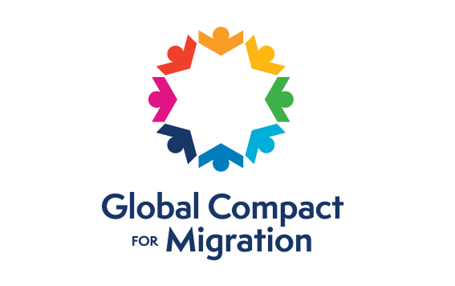Today, there are over 258 million migrants around the world living outside their country of birth. This figure is expected to grow for a number of reasons including population growth, increasing connectivity, trade, rising inequality, demographic imbalances and climate change. Migration provides immense opportunity and benefits – for the migrants, host communities and communities of origin. However, when poorly regulated it can create significant challenges. These challenges include overwhelming social infrastructures with the unexpected arrival of large numbers of people and the deaths of migrants undertaking dangerous journeys.
In September 2016 the General Assembly decided, through the adoption of the New York Declaration for Refugees and Migrants, to develop a global compact for safe, orderly and regular migration.
The process to develop this global compact started in April 2017. The pages in this section detail 18 months of consultation and negotiation, and provide the relevant documentation for each of the events.
On 13 July 2018 UN Member States finalized the text for the Global Compact for Safe, Orderly and Regular Migration (Text available in all official languages).
The Intergovernmental Conference to Adopt the Global Compact for Safe, Orderly and Regular Migration will be held on 10 – 11 December in Marrakech, Morocco.
Global Compact
The Global Compact for Migration is the first-ever UN global agreement on a common approach to international migration in all its dimensions. The global compact is non-legally binding. It is grounded in values of state sovereignty, responsibility-sharing, non-discrimination, and human rights, and recognizes that a cooperative approach is needed to optimize the overall benefits of migration, while addressing its risks and challenges for individuals and communities in countries of origin, transit and destination.
The global compact comprises 23 objectives for better managing migration at local, national, regional and global levels. The compact:
- aims to mitigate the adverse drivers and structural factors that hinder people from building and maintaining sustainable livelihoods in their countries of origin;
- intends to reduce the risks and vulnerabilities migrants face at different stages of migration by respecting, protecting and fulfilling their human rights and providing them with care and assistance;
- seeks to address the legitimate concerns of states and communities, while recognizing that societies are undergoing demographic, economic, social and environmental changes at different scales that may have implications for and result from migration;
- strives to create conducive conditions that enable all migrants to enrich our societies through their human, economic and social capacities, and thus facilitate their contributions to sustainable development at the local, national, regional and global levels.
The list of the 23 objectives can be found in paragraph 16 of the Global Compact for Migration.





